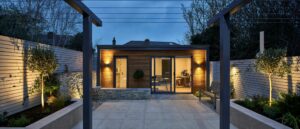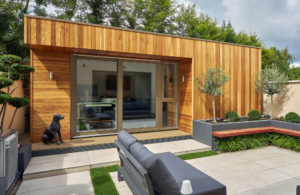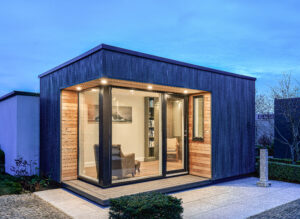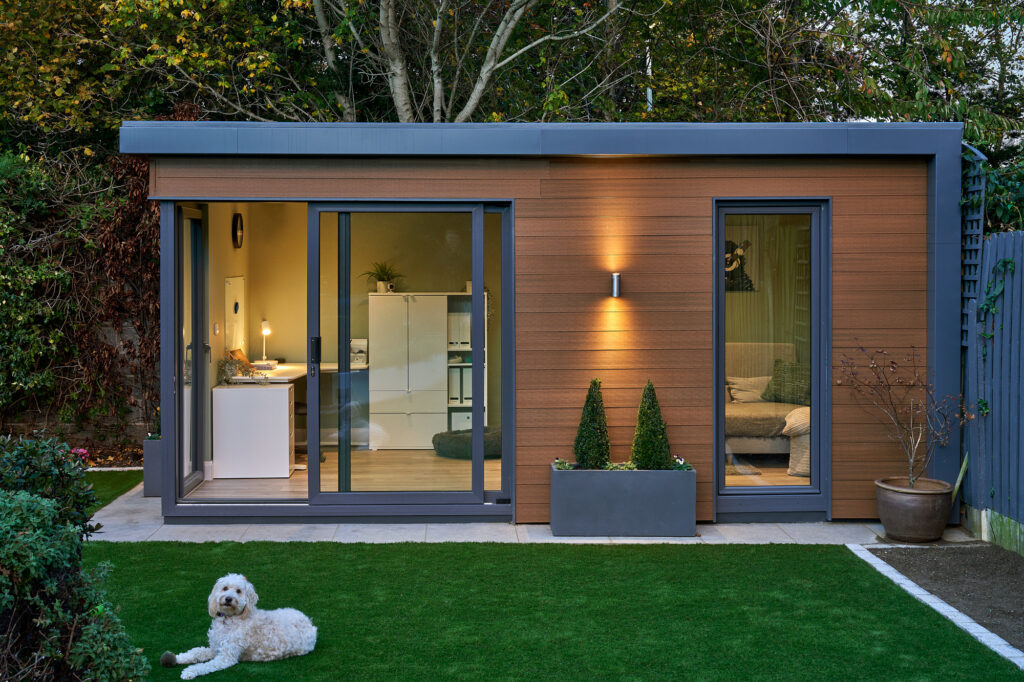With 23 years of experience supplying Garden Rooms to the Irish market, we are frequently asked what the difference is between a log cabin and a Garden Room. While we have our own ideas (which we hope you understand!), here are five areas for comparison to help you understand.
Appearance
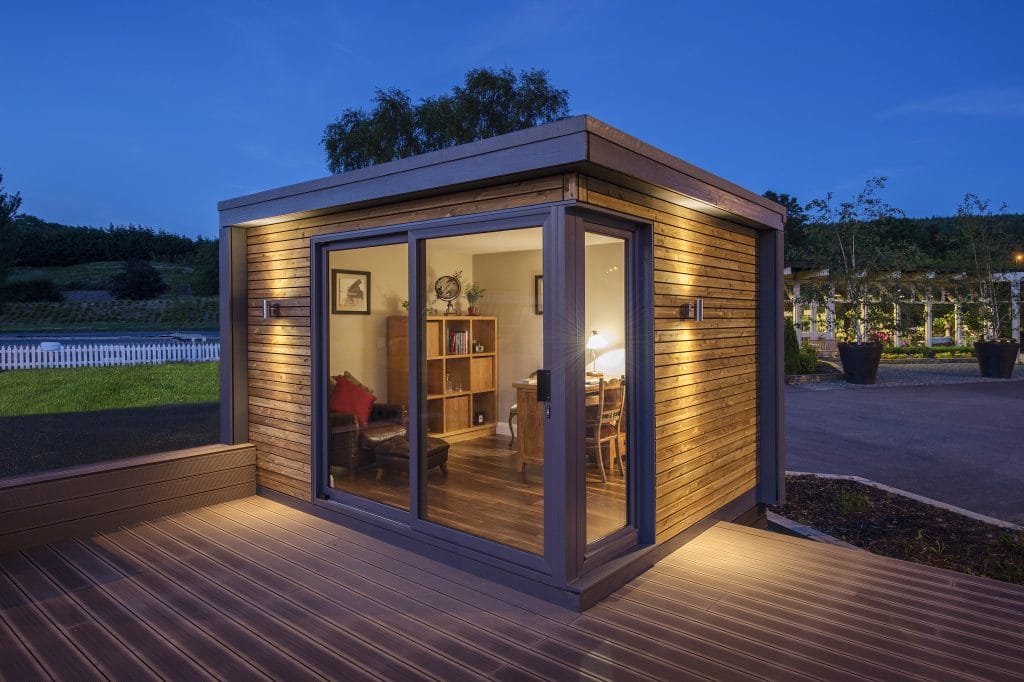
A log cabin’s appearance is often quite distinguishable from that of a Garden Room. Whichever is preferred is a matter of taste and preference, as “beauty is in the eye of the beholder.” Log cabins have a more traditional appearance with their gable roofs, smaller windows, and decorative fascia boards. Garden Rooms have a more contemporary appearance with their larger glazing, sleeker lines, and minimalist detailing. The visual distinctions become muddled when some log cabin forms adopt a more contemporary appearance while remaining recognisable by their log criss cross corner detail.
Structure
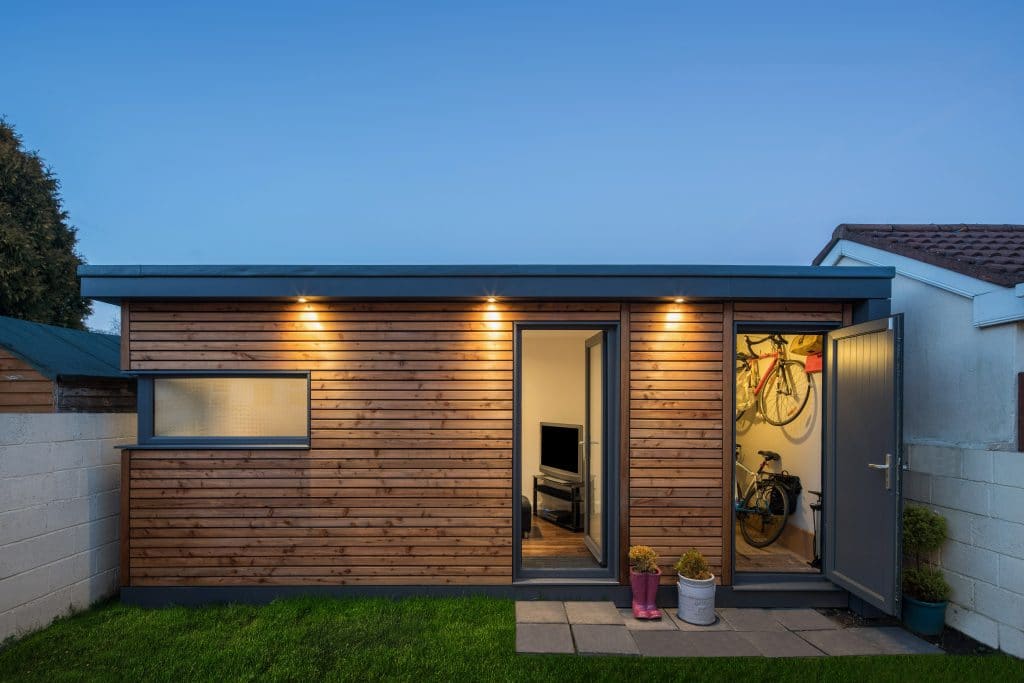
Log cabins are, in essence, one-skin structures. Horizontal logs interlock with one another (particularly in the corners) giving both the structural foundation and the building’s outward appearance. Garden Rooms on the other hand tend to be a multilayered construction, most typically in timber-frame (much like many homes). In a Garden Room, the external cladding and interior finishes are extra layers over the core and underlying structural parts. In order to get better insulation performance and to hide services, log cabins will regularly have additional skins on the inside. A key factor in all garden buildings used for additional living space is the detail of the foundation, damp-proofing and insulation of the floors. It is so important to make sure you have a clear picture of how your proposed building is specified. All too often we have seen mould and wetting at the base of log cabins and other garden buildings.
Levels of Comfort and Use
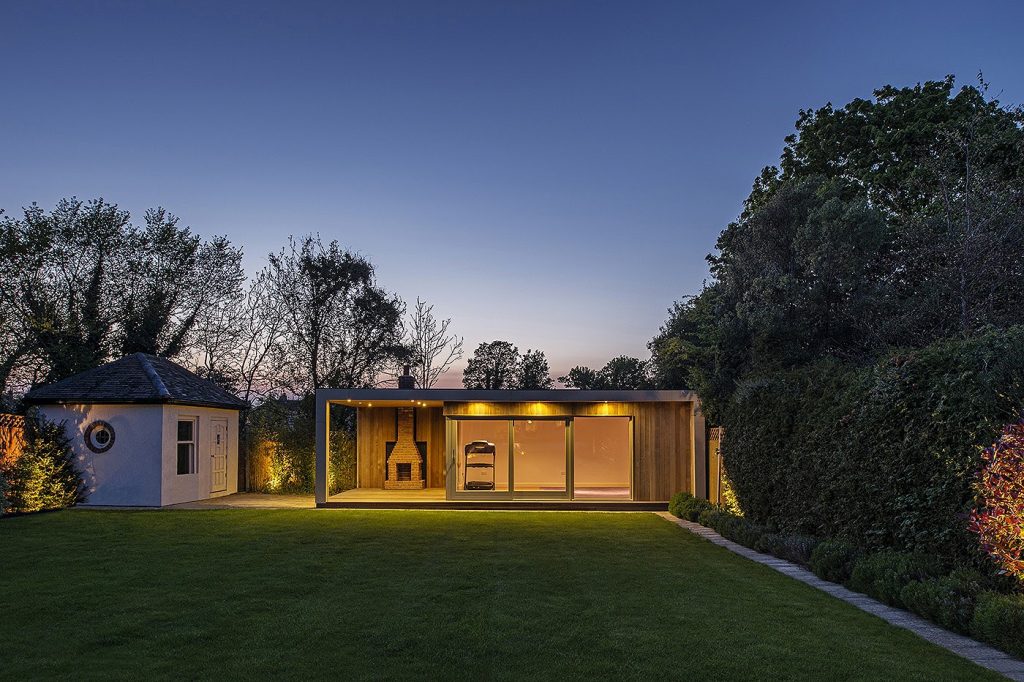
If a conventional log cabin constructed of thick pine logs is to be used 12 months a year, additional layers of insulation and airtightness are required. While timber has insulating capabilities, it requires additional components to provide a sustainable level of warmth 365 days a year. Since timber is a natural commodity that moves, airtightness is also a consideration. If the timber frame is well insulated (including the floor and roof) and the windows are properly sealed during installation, a Garden Room will keep you warm and cozy throughout the year with minimal heat input.
Longevity
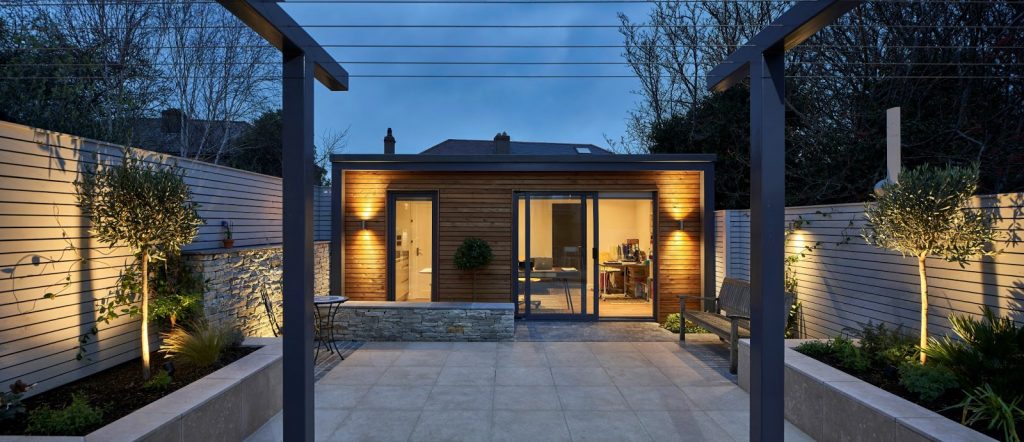
The detailing of materials is critical to ensure longevity. Almost as importantly, we want longevity without requiring an extensive maintenance plan. The type of wood used, its breathability, and the fixing details (preferable stainless steel) all contribute to a construction that looks nice, lasts a long time, and does not require annual painting. Due to the high volume of wood used in their structure (thickness), log cabins tend to have cheaper pines that aren’t as hardy and require significant maintenance.
Cost
This is where log cabins win hands down. For a basic log cabin structure the price will be significantly less than the equivalent-sized Garden Room. If you choose insulation, plaster, electrics, insulated floors and insulated roofs with more robust roof finishes for your log cabin, then the prices will be closer. If your intended use is for an incidental playroom or a summer room, the log cabin route will be more cost effective. To imitate the comfort and feel of your home, a Garden Room is a superior option. Bear in mind that a garden construction is a long-term investment with a relatively low marginal cost over time.
Whichever structure you pick, we hope it enhances your family’s quality of life and provides many years of enjoyment.
